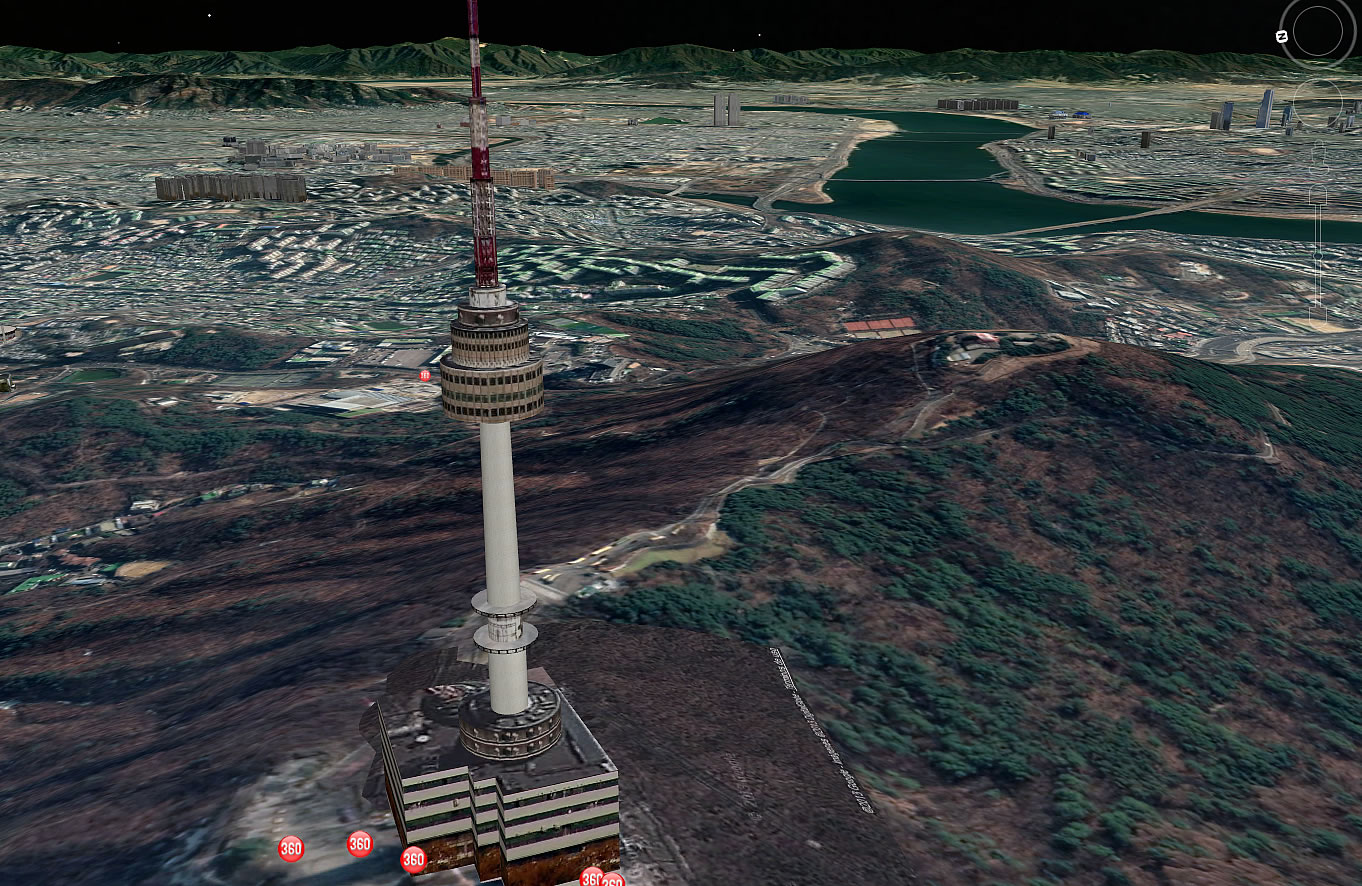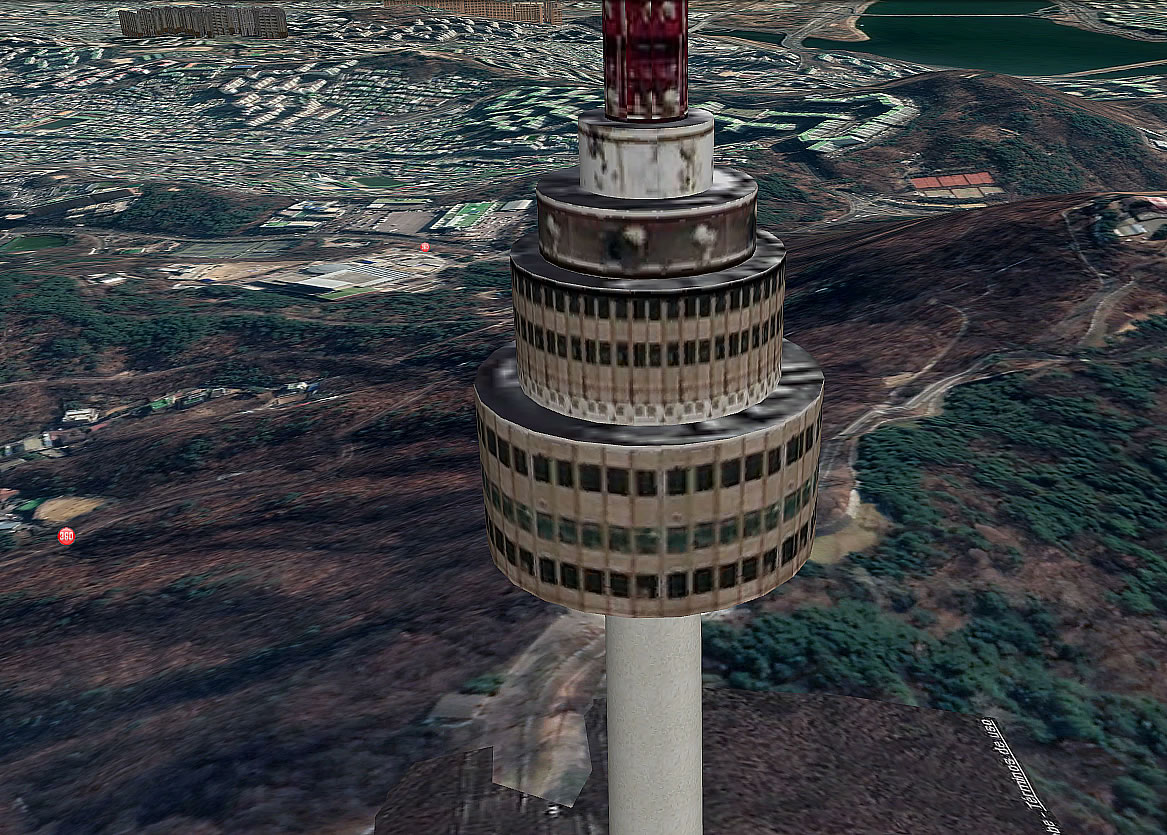The N Seoul Tower (Korean: N서울타워), officially the YTN Seoul Tower and commonly known as the Namsan Tower or Seoul Tower, is a communication and observation tower located on Namsan Mountain in central Seoul, South Korea. At 236 metres (774 ft), it marks the second highest point in Seoul. Built in 1971, the N Seoul Tower is South Korea's first general radio wave tower, providing TV and radio broadcasting in Seoul. Currently, the tower broadcasts signals for Korean media outlets, such as KBS, MBC and SBS.
History: Built in 1969 at a cost of approximately 2.5 million USD, Namsam tower was opened to the public in 1980. Seoul Tower was completed on December 3, 1971, designed by architects at Jangjongryul though at the time the facility interior was not furnished. It took until August 1975 for the third floor of the observatory deck, museum, open hall, souvenir shop, in addition to bring the other facilities to completion. However, despite finalization of tower construction, the observatory was closed to the public until October 15, 1980. Since then, the tower has been a landmark of Seoul. Tower elevation ranges from 236.7 m (777 ft) at the base to 479.7 m (1,574 ft) above sea level. Seoul Tower had its name changed to N Seoul Tower in 2005 whereas the "N" stands for 'new', 'Namsan', and 'nature.' Approximately 15 billion KRW was spent in renovating and remodeling the tower.
When N Seoul Tower's original owner merged with CJ Corporation, it was renamed the N Seoul Tower (official name CJ Seoul Tower). It has also been known as the Namsan Tower or Seoul Tower. It is also Korea's first general radio wave tower that holds transmissions antennas of KBS, MBC, SBS TV, FM, PBC, TBS, CBS, and BBS FM. Seoul Tower chosen to worldwide travel expert evaluation and reader preferences is registered the world's 500 attractions in research.
The N Tower has four floors: 1F, 2F, 3F, and 5F (most buildings in Korea avoid having fourth floors). There are four observation decks (the 4th observation deck, which is the revolving restaurant, rotates at a rate of one revolution every 48 minutes), as well as gift shops and two restaurants. Most of the city of Seoul can be seen from the top. Close to N Seoul Tower is a second lattice transmission tower. The tower offers a digital observatory with a 360° panoramic view that showcases Korea's history through 32 LCD screens. This is located on the third floor of the N Tower.
Many visitors ride the Namsan cable car up the Mt. Namsan to walk to the tower. The tower is renowned as a national landmark and for its cityscape views. The 236.7 m (777 ft) tower sits on the Namsan mountain (243m or 797 ft). It attracts thousands of tourists and locals every year, especially during nighttime when the tower lights up. Photographers enjoy the panoramic view the tower offers. Each year, approximately 8.4 million visit the N Seoul Tower, which is surrounded by many other attractions South Korea offers, including Namsan Park and Namsangol Hanok Village. Visitors may go up the tower for a fee that differs for the following groups: children, elderly and teenagers, and adults.
Lighting of the Tower: The N Seoul Tower is illuminated in blue from sunset to 23:00 (22:00 in winter) on days where the air quality in Seoul is 45 or less. During the spring of 2012, the Tower was lit up for 52 days, which is four days more than in 2011. The tower uses the latest LED technology to offer visitors a digital, cultural art experience through 'light art.' The N Seoul Tower puts on many different shows, including the "Reeds of Light" and "Shower of Light."
An exception to this is Earth Day. On Earth Day, lights were held nationwide to promote awareness of energy conservation. At 8 p.m KST. on that day, lights at N Seoul Tower on Namsan disappear into darkness.
In 2012, surveys conducted by Seoul City revealed foreign tourists ranked the N Seoul Tower
as
the number one tourist attraction. The N Seoul Tower is now also a symbol of Seoul. |





























